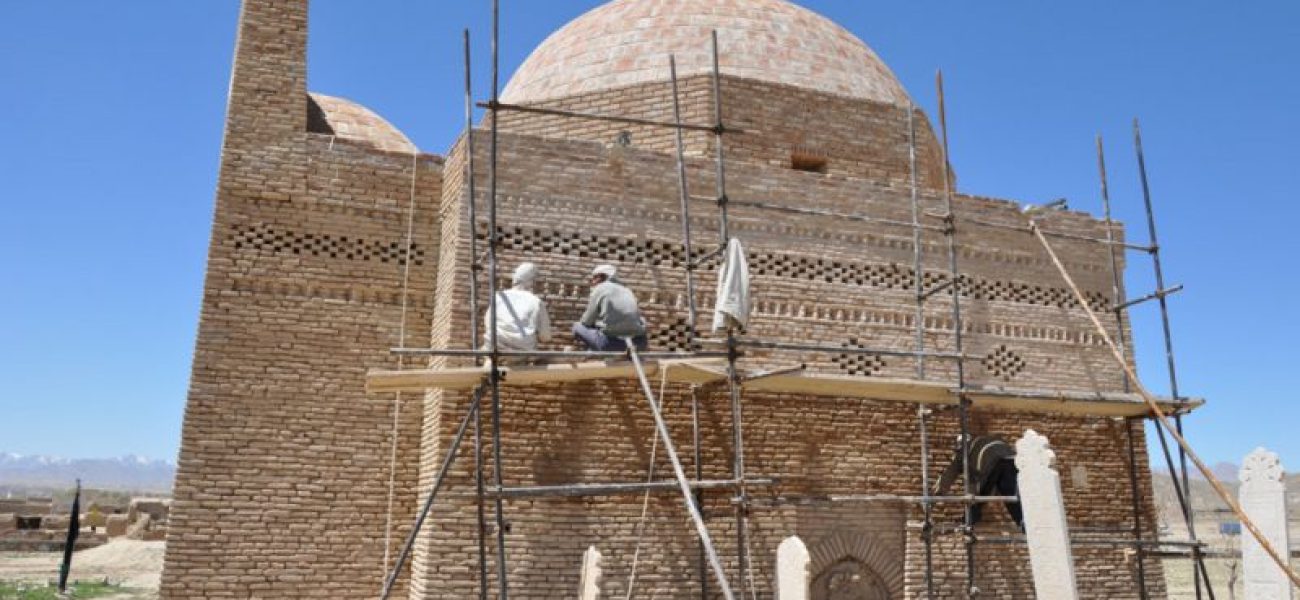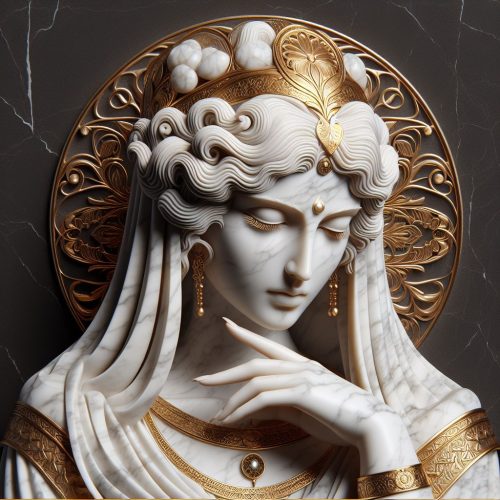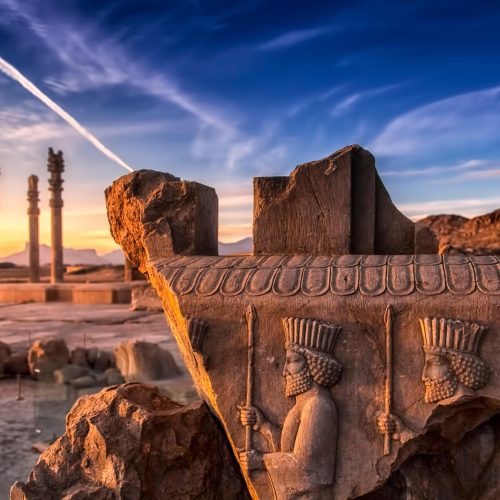In the vast firmament of Persian literature, where countless stars have shone through the ages, there exists a luminary whose brilliance has endured for a millennium, casting its radiant glow upon the rich tapestry of Iranian cultural heritage. This celestial body of poetic genius is none other than Farrukhi Sistani, a name that resonates with the melodious cadence of classical Persian verse and echoes through the corridors of time with undiminished vigor.
As we embark upon this exploration of Farrukhi’s life and works, let us first pause to inhale the fragrant air of 10th-century Persia, a land where the aroma of saffron mingled with the incense of scholarly pursuits, where the clash of swords harmonized with the gentle scratching of reed pens on parchment. It is in this crucible of culture and conflict that our protagonist emerges, a flower blooming amidst the harsh desert winds of Sistan.
Background: The Cradle of a Poetic Prodigy
The story of Farrukhi Sistani begins in the southeastern province of Sistan, a region steeped in history and myth, where the echoes of ancient Zoroastrian fire temples still whispered their secrets to those who would listen. Born in the latter half of the 10th century CE, Farrukhi entered a world poised on the cusp of great change, as the weakening Samanid Empire gave way to the rising tide of Ghaznavid power.
Sistan, with its harsh beauty and resilient people, was a fitting birthplace for a poet whose verses would later capture both the delicacy of a rose petal and the strength of a warrior’s resolve. The exact year of Farrukhi’s birth remains shrouded in the mists of time, much like the morning fog that often blanketed the marshlands of his homeland. Yet, we can imagine the joy that must have filled his family’s modest home when the first cries of the infant Farrukhi pierced the air, heralding the arrival of one who would become a master of words and emotions.
The young Farrukhi grew up in an environment rich with oral tradition, where the epic tales of Rostam and Sohrab, passed down through generations, kindled the imagination of children and adults alike. It was in this fertile soil of storytelling and linguistic artistry that the seeds of Farrukhi’s poetic genius were sown, nurtured by the harsh sun and unyielding winds of Sistan.
As a child, Farrukhi would have witnessed the ebb and flow of caravans along the ancient trade routes that crisscrossed his homeland, bringing not just goods but also ideas, languages, and cultural influences from distant lands. This early exposure to the diverse tapestry of human experience would later manifest in the rich imagery and universal themes that characterize his poetry.
The political landscape of Farrukhi’s youth was as turbulent as the sandstorms that occasionally engulfed Sistan. The once-mighty Samanid Empire, which had fostered a golden age of Persian literature and art, was crumbling under the weight of internal strife and external pressures. As the young poet came of age, he would have been keenly aware of the shifting sands of power, a theme that would later infuse his works with a deep understanding of the transient nature of worldly glory.
It was against this backdrop of change and uncertainty that Farrukhi received his early education. Though the details of his schooling are lost to history, we can surmise that he was fortunate enough to study under learned tutors who recognized and nurtured his budding talent. The traditional Islamic education of the time would have immersed him in the Quranic sciences, Arabic grammar, and the fundamentals of poetry and rhetoric.
But it was not merely formal education that shaped the young Farrukhi. The very landscape of Sistan, with its stark contrasts and hidden beauties, etched itself into his soul. The vast expanses of desert, punctuated by life-giving oases, taught him the value of concision and impact in language. The mighty Helmand River, flowing through the heart of the region, showed him the power of persistence and the beauty of constant renewal – themes that would later flow through his verses with the same inexorable force.
As Farrukhi’s talent blossomed, so too did his reputation in local literary circles. It is said that even in his youth, his ability to craft exquisite ghazals and qasidas drew the attention of Sistan’s cognoscenti. His early works, though few have survived the ravages of time, were likely characterized by the exuberance of youth tempered by an already remarkable command of language and meter.
The young poet’s rise coincided with the ascendancy of the Ghaznavid dynasty, whose patronage of the arts would provide fertile ground for Farrukhi’s talents to flourish. As news of his skill spread beyond the borders of Sistan, it was only a matter of time before the glittering court of Ghazni would beckon, offering the promise of fame, fortune, and the opportunity to immortalize his name in the annals of Persian literature.
And so, as we stand at the threshold of Farrukhi’s journey from provincial prodigy to court laureate, we can almost hear the wind carrying the first notes of a poetic symphony that would enchant generations to come. The stage was set, the ink was prepared, and the heart of a young man from Sistan beat with the rhythm of verses yet unwritten, ready to embark on a life that would intertwine inextricably with the golden thread of Persian literary history.
Life: A Tapestry of Verse and Patronage
The life of Farrukhi Sistani unfolds like an intricately woven Persian carpet, each thread a verse, each knot a moment of triumph or tribulation, creating a masterpiece that has endured for centuries. As we trace the pattern of his existence, we find a man whose life was as poetic as the words he penned, a journey that took him from the dusty streets of Sistan to the marble halls of royal courts.
Our poet’s ascent to fame began with a fortuitous encounter that seems plucked from the pages of a romantic epic. Legend has it that the young Farrukhi, his talent still unrecognized beyond the confines of his homeland, composed a qasida in praise of the local Amir of Chaghaniyan. The verses, as sharp as a scimitar and as sweet as Shirazi wine, caught the attention of the Amir’s stable master, who was so moved that he gifted Farrukhi with a magnificent steed.
This act of generosity inspired the poet to craft another qasida, this time in honor of the stable master himself. The poem, which began with the now-famous line “My idol came from the stable, happy and smiling,” not only showcased Farrukhi’s wit and verbal dexterity but also demonstrated his ability to elevate the mundane to the sublime. It was this qasida that would serve as the key to unlock the doors of courtly patronage, setting Farrukhi on a path that would lead him to the zenith of poetic achievement.
Word of Farrukhi’s talent soon reached the ears of Sultan Mahmud of Ghazni, a ruler whose name would become synonymous with the golden age of Persian literature. Mahmud, a conqueror with the soul of a poet, recognized in Farrukhi a kindred spirit whose words could immortalize his reign far more effectively than any monument of stone. Thus began a relationship between patron and poet that would define both of their legacies.
At the Ghaznavid court, Farrukhi found himself in a galaxy of literary stars. Here, he rubbed shoulders with the likes of Unsuri and Ferdowsi, engaging in poetic duels that sharpened his craft and expanded his repertoire. The competitive yet collaborative atmosphere of the court served as a crucible in which Farrukhi’s raw talent was refined into pure artistic gold.
It was during this period that Farrukhi’s style reached its apotheosis. His panegyrics to Sultan Mahmud were not mere flattery, but masterpieces that elevated both the subject and the art form itself. With a deft touch, he wove historical events, philosophical musings, and vivid natural imagery into tapestries of verse that captivated his audience and earned him a place among the most revered poets of his time.
Farrukhi’s life at court was not without its challenges. The world of royal patronage was a treacherous one, where favor could be as fleeting as morning dew. Yet, our poet navigated these waters with the same grace that characterized his verses. His ability to adapt to the changing moods of his patrons while maintaining the integrity of his art speaks to a deep understanding of human nature that infused his work with timeless relevance.
As Farrukhi’s fame grew, so did his influence. He became not just a court poet, but a cultural ambassador, accompanying Sultan Mahmud on his military campaigns to India. These journeys expanded Farrukhi’s worldview and provided him with a wealth of new experiences and imagery to draw upon in his poetry. The exotic landscapes, unfamiliar customs, and the drama of conquest all found their way into his verses, adding new dimensions to the Persian poetic tradition.
But it was not only in the realm of poetry that Farrukhi excelled. His keen intellect and diplomatic skills made him a valuable advisor to the Sultan, and he often found himself entrusted with delicate political missions. This dual role as artist and statesman gave Farrukhi a unique perspective on power and its workings, a theme that he explored with subtlety and insight in his later works.
As the years passed, Farrukhi’s position at court remained secure, a testament to both his poetic genius and his political acumen. He witnessed the transition of power from Mahmud to his son Mas’ud, adapting his art to suit the tastes of the new ruler while maintaining the high standards he had set for himself. It was during this later period of his life that Farrukhi produced some of his most introspective and philosophically rich poetry, reflecting on the nature of existence, the passage of time, and the eternal quest for meaning.
The exact date of Farrukhi’s death, like much of his early life, is lost to the mists of time. Some sources suggest he passed away around 1037 CE, others place his death a few years later. What is certain is that he left behind a legacy that would continue to inspire and influence Persian poetry for centuries to come.
As we draw the curtain on the life of Farrukhi Sistani, we are left with the image of a man who lived as he wrote – with passion, intelligence, and an unwavering commitment to beauty. From the humble beginnings in Sistan to the grand stages of the Ghaznavid court, Farrukhi’s journey was one of constant growth and artistic refinement. He was a man who understood that true immortality lies not in conquest or wealth, but in the enduring power of words to move the human heart.
In the end, Farrukhi Sistani’s life serves as a reminder of the transformative power of poetry and the enduring nature of art. Though empires may crumble and dynasties may fall, the verses of a true master continue to resonate across the centuries, speaking to us still with the freshness of a spring breeze carrying the scent of newly bloomed roses.
Works: A Treasury of Poetic Brilliance
The oeuvre of Farrukhi Sistani stands as a glittering testament to the heights that Persian poetry reached during the Golden Age of Islamic civilization. His works, a harmonious blend of technical mastery and emotional depth, continue to captivate readers and scholars alike, offering a window into the rich cultural tapestry of medieval Persia.
At the heart of Farrukhi’s poetic legacy lies his diwan, a collection of poems that showcases the full spectrum of his artistic genius. This compendium, carefully preserved and transmitted through the centuries, contains a dazzling array of poetic forms, each polished to perfection by the master’s hand. From soaring qasidas that sing the praises of his patrons to intimate ghazals that plumb the depths of human emotion, the diwan of Farrukhi is a treasure trove of linguistic artistry.
Perhaps the most renowned among Farrukhi’s works are his panegyrics, composed in honor of Sultan Mahmud of Ghazni and other notable figures of his time. These qasidas are not mere exercises in flattery, but complex compositions that interweave praise with profound reflections on power, morality, and the human condition. In one of his most famous panegyrics, Farrukhi begins:
“O King, whose fortune is youthful, whose kingdom is ancient, Whose visage is radiant, whose heart is like the ocean.”
With these opening lines, Farrukhi sets the stage for a masterful exploration of kingship, juxtaposing the youth of the ruler with the antiquity of his domain, the brightness of his countenance with the depth of his wisdom. As the poem unfolds, we see Farrukhi’s skill in building layer upon layer of meaning, each verse adding nuance and complexity to his portrait of the ideal sovereign.
But it would be a mistake to view Farrukhi solely through the lens of court poetry. His ghazals reveal a more intimate side of the poet, one that grapples with the universal themes of love, longing, and the ephemeral nature of existence. In these shorter lyric poems, we find Farrukhi at his most introspective, using the conventions of Persian love poetry to explore the deepest recesses of the human heart. One particularly poignant ghazal begins:
“Last night, in my dreams, I saw your face, And woke to find my pillow wet with tears.”
In just two lines, Farrukhi captures the exquisite pain of separation, the blurred lines between dream and reality that characterize the lover’s experience. It is in these moments of raw emotional honesty that we see the true genius of Farrukhi – his ability to distill complex human experiences into crystalline verses that resonate across time and culture.
Farrukhi’s mastery extended beyond the realm of lyric poetry. He was also renowned for his skill in composing qit’as, shorter poems often used to convey moral or philosophical insights. These pithy compositions showcase Farrukhi’s wit and wisdom, offering nuggets of profound truth wrapped in the glittering foil of his verse. One famous qit’a advises:
“Seek not to plumb the depths of Fate’s design, For even the wisest are but fools therein. Live well today, for who can say If tomorrow’s sun will rise for thee again?”
Here, we see Farrukhi grappling with the great philosophical questions of his time – the nature of fate, the limits of human knowledge, and the importance of living in the present. His ability to distill these complex ideas into a few powerful lines speaks to his genius as both a poet and a thinker.
One of the most remarkable aspects of Farrukhi’s work is his use of imagery drawn from the natural world. His verses are peppered with vivid descriptions of landscapes, flora, and fauna, often used as metaphors for human emotions or spiritual states. In one memorable passage, he compares the beloved’s hair to the night sky:
“Your tresses, dark as the moonless night, A sky where stars of musk take flight.”
This couplet not only demonstrates Farrukhi’s keen observational skills but also his ability to create synesthetic imagery, blending visual and olfactory sensations to create a powerful poetic effect.
Farrukhi’s technical mastery is evident in his expert use of rhetorical devices and wordplay. He was particularly adept at employing iham, a form of double entendre that adds layers of meaning to his verses. This linguistic dexterity, combined with his profound understanding of Persian prosody, allowed him to create poems that were at once musically pleasing and intellectually stimulating.
While much of Farrukhi’s work was composed in the context of court poetry, he also produced more personal and reflective pieces, particularly in his later years. These poems often touch on themes of aging, the transience of worldly glory, and the search for spiritual fulfillment. In one poignant reflection on the passage of time, he writes:
“The caravan of life moves swift and sure, Each breath a step towards the final door. O heart, make merry while you may, For time, once past, returns no more.”
These lines, suffused with a melancholic wisdom, reveal a poet who has not only mastered his craft but has also gained deep insights into the human condition through a life richly lived.
His Influence
Farrukhi Sistani, a luminous figure in Persian literature, emerges as a vital influence in the tapestry of Persian poetry, weaving themes of love, nature, and the ephemeral nature of life with exquisite craftsmanship. His works, characterized by their lyrical elegance, delve into the human experience, reflecting the intricate interplay between the mortal and the divine.
One of the most striking themes in Farrukhi’s poetry is the celebration of love, not merely as a romantic pursuit but as a profound, transformative force. His verses resonate with an intensity that captures the soul’s longing and the beauty of connection. This exploration of love paved the way for subsequent poets, who would draw upon his intricate depictions of desire and emotional depth. Through metaphors and imagery, he cultivates an atmosphere where love transcends mere passion, becoming a pathway to spiritual enlightenment.
Stylistically, Farrukhi’s poetry is notable for its rich imagery and mastery of form. He employs a variety of metrical patterns, showcasing a command of rhythm that enhances the musicality of his verses. His use of simile and metaphor invites readers to engage with the text on multiple levels, creating a layered understanding of the human condition. The interplay of light and shadow, often mirrored in his descriptions of nature, serves to illuminate the transient beauty of existence, a theme that resonates throughout Persian literature.
Moreover, Farrukhi’s keen observations of nature—lush gardens, flowing rivers, and the ever-changing sky—function as a backdrop for his explorations of human emotion. This alignment with the natural world enriches his poetry, as he intertwines personal experience with the broader cycles of life. The fusion of nature and emotion not only defines his unique voice but also influences later poets, who would adopt and adapt these elements to express their own existential musings.
In the broader context of Persian literary history, Farrukhi Sistani stands as a bridge between the classical traditions and the evolving narrative of Persian poetry. His works laid foundational stones for the poets who followed, such as Rudaki and Ferdowsi, who would echo his themes while forging their distinct paths. The ultimate legacy of Farrukhi lies in his ability to blend personal introspection with universal themes, crafting poetry that speaks to the heart of human experience.
As we delve deeper into his influence, it becomes evident that Farrukhi’s mastery of language and form has left an indelible mark on Persian poetry. His exploration of dualities—love and loss, joy and sorrow—creates a dialogue that continues to inspire poets to this day. This rich tapestry of emotions resonates within the works of later literary giants, highlighting Farrukhi’s role as a luminary in the evolution of Persian poetic tradition.
The works of Farrukhi Sistani embody a profound engagement with themes of love and nature, rendered through a masterful stylistic approach. His ability to articulate the complexities of the human experience has solidified his status as a pivotal figure in Persian literature. As scholars and enthusiasts of Iranian studies continue to explore the depths of his poetry, they uncover not only the essence of his contributions but also the enduring power of his artistic vision, which continues to illuminate the path of Persian poetry.




